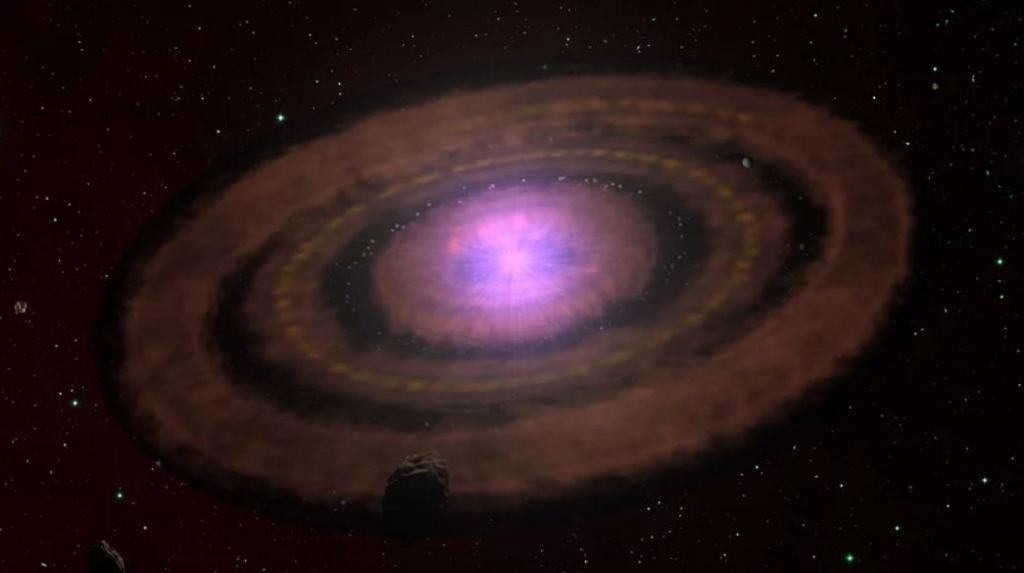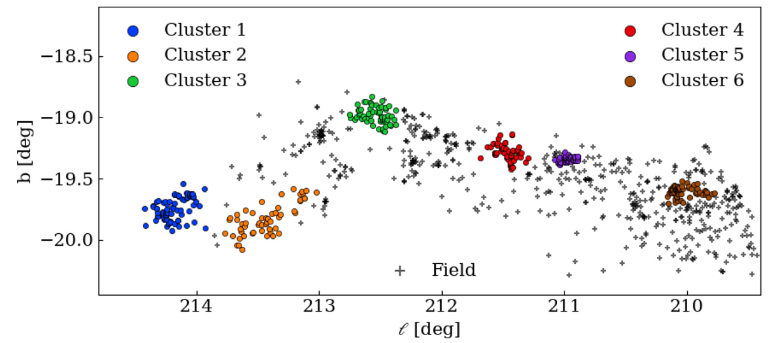We’ve Now Seen Planet-Forming Disks Around Hundreds of Young Stars. What Do They Tell Us?
Is our Solar System comparable to other solar systems? What do other systems look like? We know from exoplanet studies that many other systems have hot Jupiters, massive gas giants that orbit extremely close to their stars. Is that normal, and our Solar System is the outlier?
One way of addressing these questions is to study the planet-forming disks around young stars to see how they evolve. But studying a large sample of these systems is the only way to get an answer. So that’s what a group of astronomers did when they surveyed 873 protoplanetary disks.
Mass is the critical piece in a new study into planet-forming disks. The disk’s mass determines how much matter is available to form planets. By measuring the disks’ mass around young stars, astronomers can constrain the total mass of planets that might form there and get one step closer to understanding solar system architecture.
The new study is “Survey of Orion Disks with ALMA (SODA): I. Cloud-level demographics of 873 protoplanetary disks.” It’s published in the journal Astronomy and Astrophysics, and the lead author is Sierk van Terwisga, a scientist at the Max Planck Institute for Astronomy in Heidelberg, Germany.
“Up to now, we didn’t know for sure which properties dominate the evolution of planet-forming disks around young stars,” van Terwisga said in a press release. “Our new results now indicate that in environments without any relevant external influence, the observed disk mass available for forming new planets only depends on the age of the star-disk system.”
The dust mass not only tells astronomers the mass of planets that might form from a disk. Depending on the disk’s age, it could also tell astronomers what planets have already formed.
But other factors affect disk mass too, and those factors vary from disk to disk. Things like stellar wind and irradiation from nearby stars outside the disk can also affect mass. So how were the researchers able to isolate those effects in such a large sample?
They focused on a well-known region of protoplanetary disks called the Orion A cloud, which is part of the Orion Molecular Cloud Complex (OMCC). The OMCC is about 1350 light-years away and home to the well-studied Orion Nebula, a feature even backyard astronomers can see.

Álvaro Hacar is a co-author of the study and a scientist at the University of Vienna, Austria. “Orion A provided us with an unprecedented large sample size of more than 870 disks around young stars,” Hacar said. “It was crucial to be able to look for small variations in the disk mass depending on age and even on the local environments inside the cloud.”
This is a good sample because all disks belong to the same cloud. That means their chemistry is uniform, and they all have the same history. The nearby Orion Nebular Cluster (ONC) hosts some massive stars that could affect other disks, so the team rejected any disks in Orion A closer than 13 light-years to the ONC.
Measuring the mass of all these disks was tricky. The team used the Atacama Large Millimeter/Submillimeter Array (ALMA) to observe the dust. ALMA can be tuned to different wavelengths, so the team observed the young disks at a 1.2 mm wavelength. At that wavelength, the dust is bright, but the star is dim, which helps eliminate the effect of the star in each disk. Since observing at 1.2 mm makes the observations insensitive to objects larger than a few mm—for example, planets that have already formed—the team’s measurements measured only dust available to form new planets.

Image Credit: MPIA graphics department
Measuring dust without interference from stars was one hurdle, but the researchers faced another one: data.
A detailed survey of almost 900 protoplanetary disks creates a lot of data, and all that data has to be processed before it has any collective meaning. If the team had relied on existing methods, it would have taken about six months to process all that data. Instead, they developed their own method to handle the data using parallel processing. What would’ve taken months took less than one day. “Our new approach improved the processing speed by a factor of 900,” co-author Raymond Oonk said.
When they processed the data, the researchers found that most of the disks held only 2.2 Earth masses of dust. Only 20 of the almost 900 disks held enough dust for 100 or more Earths. “In order to look for variations, we have dissected the Orion A cloud and analyzed these regions separately. Thanks to the hundreds of disks, the sub-samples were still sufficiently large to yield statistically meaningful results,” van Terwisga explained.
The researchers found some variability in disk dust mass in different regions of Orion A, but the variations were minimal. The age effect can account for the variations, according to the authors. As disks age, the disk mass declines, and clusters of disks the same age have the same mass distribution. “We must stress that the differences between these clusters, which are located far from each other on the sky, are small and not highly significant relative to each other and to the field, even in the most extreme cases,” the authors write in their paper.

It’s expected that as disks age their dust mass decreases. Planetary formation accounts for most of that decrease: what was once dust becomes planets. But other effects contribute to dust loss, too. Dust can migrate towards the disk center, and irradiation from the host star can evaporate the dust. But this study strengthens the correlation between age and dust loss.
Can the results from this study apply to other young star-disk populations? The authors compared their results from Orion A with several neighbouring star-forming regions with young disks. Most of them, but not all, fit with the age-related mass loss seen in Orion A. “Altogether, we think our study proves that at least within the next 1000 light-years or so, all populations of planet-forming disks show the same mass distribution at a given age. And they seem to be evolving in more or less the same way,” van Terwisga said.
The researchers have more work they’d like to do. They’re going to examine the effect smaller stars can have on a smaller scale of a few light years. In this study, they avoided the effect that massive stars in the ONC can have on neighbouring disks. But smaller background stars could still be affecting the disks, and they might explain some of the small variations in the age-mass correlation.
The age of the star and its disk, the chemical properties, and the dynamics of the parent cloud all combine with mass to paint a clearer picture of the solar system that arises from the disk. Astronomers aren’t able to take data like this and predict what type of planets might form in any given Solar System. But it’s remarkable that the correlation between disk age and disk mass is strong, even across large structures like Orion A.
“The remarkably homogeneous properties of disk samples of the same age are a surprising finding,” the authors conclude, and their results confirm what previous studies and surveys hinted at. “Now, however, we can show this applies to a larger number of YSOs and YSO clusters, forming in well-separated parts of the same giant cloud. For the first time, the unprecedented size of the SODA (Survey of Orion Disks with Alma) disk sample allows us to zoom in on the effects of age gradients and clustering in a single star-forming region.”
More:
- Press Release: Planet-forming disks evolve in surprisingly similar ways
- New Research: Survey of Orion Disks with ALMA (SODA): I. Cloud-level demographics of 873 protoplanetary disks
- Universe Today: Protoplanetary Disks Throw Out More Material Than Gets Turned Into Planets
The post We’ve Now Seen Planet-Forming Disks Around Hundreds of Young Stars. What Do They Tell Us? appeared first on Universe Today.
Universe Today
Go to Source